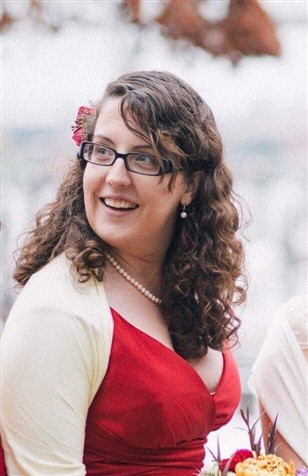There’s no instruction manual for when your children die
This is a story about recovering from grief for mothers and fathers who have lost children.
Grief is a powerful beast that raises its ugly head when you least expect it. It’s hard to keep knocking it down to get it out of your way. I wish I could tell you how to get over it, but I am not a therapist or counselor. What I can do is share my experiences with you and hope something resonates.
My husband Steve and I had two children. We lost our son to suicide ten years ago. We still miss him. A day doesn’t go by when we don’t think of him. Losing Joss is a huge part of my grief but this story is about another loss.
Our daughter Rihana was killed in a car accident two years ago. I struggle to deal with her loss every day. Not only because I miss her terribly, but because she had led a very difficult life for a long time and I wish I could have helped her more.
Warning signs.
Rihana attended law school in Virginia, three thousand miles from our home in Arizona. She stayed there for a while after she graduated, preparing to take the bar exam. During that time, she was slow to respond to emails, phone calls, or text messages. She rarely initiated communication unless she needed something. We were used to this behavior, knowing she was a private person and rarely shared much about her life with us. This communication gap was extreme, though, and I became concerned that something wasn’t right with her.
When she stopped responding entirely, I started to get really worried. After too many days without any response, I boarded a plane to Virginia to find out what was going on. I rented a car at the airport and drove to her apartment, finding her at home in her small apartment. She said she was surprised to see me,  even though I had sent her multiple messages telling her I was on my way.
even though I had sent her multiple messages telling her I was on my way.
Her apartment was a disaster. Not that she had ever been a tidy person, but what I saw was absolute squalor. I will leave it to your imagination to picture what it must have looked like. She had two greyhounds living with her. One was huge, almost a foot taller than her other dog, no shorty herself. There was no floor space showing, but somehow the two dogs navigated through the piles of stuff and commandeered the couch, the only place to sit, for most of my visit.
I stayed for a few weeks helping to get the place cleaned up and spending time with my daughter. We had a good time together, and when I left, I thought she might be okay.
I was wrong. It turned out that was the first of several unplanned visits I made to Virginia. She shut down communication with us several times after that first trip. Each time, we knew it meant trouble. I went out and cleaned up her place, and with Steve’s help, moved her to a larger apartment in another town. By that time, Rihana had suffered the humiliation of not passing the bar exam – the first time in her life she had experienced a major failure.
The real Rihana

This was a girl who had graduated from the state university in the top 40 out of her class of over 8,000 students. She was accepted by all six top-tier law schools that she applied to several years later. Rihana was brilliant, motivated, and destined for success.
During the years between graduation from the university and before she went to law school, Rihana morphed into an amazing teacher. She taught English to students in South Korea and worked as a substitute teacher in Arizona. After law school, she started tutoring online so she could earn a living working from home while studying for the bar exam.
That girl could teach children and young adults all the way from kindergarteners to post-graduates. She advocated for every one of them. She taught the little ones to read and encouraged parents to get them tested if they indicated learning difficulties. She kept her thumb on the teens who couldn’t graduate from high school without help and whipped them into shape when they neglected their studies. She taught history to high school students to prep them for SATs and even helped graduate students pass the LSAT to get into law school. Rihana built long-term relationships with many of her students and even some of the parents. Somehow, she did all of that online without ever meeting her students in person.
Except one. Rihana tutored a young woman who lived in a dysfunctional household in California for several years. When the student worried she wouldn’t be able to graduate if she couldn’t pass her senior exams, Rihana invited her to stay with her in Virginia for two weeks so she could tutor her in person without distractions.
Besides being a talented teacher, Rihana was an organizer too. Even though she may not have organized her own environment, that girl could organize events for other people down to the last detail, from weddings to birthday parties to memorial services.
She especially liked creating the decorations. For my father’s memorial service, she made origami flower arrangements out of music sheets he had used when playing his accordion and accented them with tiny dangling silver pigs in my mother’s memory. She planned her best friend’s wedding from start to finish and helped organize my brother’s wedding in Arizona while she was overseas. And those are just a few examples of her unique organizational talents. I could go on for pages.
An invisible illness hiding in plain sight
After Rihana failed to pass the Virginia bar exam, I realized her lack of communication was primarily caused by the fact that she was struggling with demons inside her head and couldn’t find her way out. It turned out that she was very, very ill. During my third visit to Virginia, she admitted she needed professional help. She ended up with diagnoses of anxiety, depression, PTSD, OCD, and a few other conditions. She had been reluctant to seek treatment because of the cost and maybe because she just didn’t want to have to dig into her own psyche.
Not long after that visit, Rihana agreed that she could no longer manage on her own and would come back to Arizona to live with us. We hoped that living in our peaceful rural home would help her recover. During the 18 months she lived with us, she seemed to be gradually improving. She refused to get professional help after she moved home, though, insisting she could manage without it. Because we live in a rural area, access to mental health care is non-existent. She did not want to drive into the nearest city or work with a therapist online.
As her mental health started to get better, Rihana passed the Arizona bar exam. A job opportunity came up that would be a perfect fit for a lawyer/teacher, and she was considering taking a position in school law.
Sudden death, loss, grief, regret, guilt, and pain
One day, on the way to take her dog to the vet, Rihana got distracted and ran head-on into an oncoming vehicle. She was not suicidal. It really was just a tragic accident. She had forgotten to buckle her seatbelt and died instantly when her head hit the windshield. The dog survived and now lives with us.
After Rihana died in that car accident, along with all of the other emotions I was feeling, I also worried that I should have been a better mother and tried harder to help her get her illnesses under control. For the two years since her death, I have battled with conflicting emotions of loss, grief, guilt, and everything else that goes along with that.
I finally signed up to see a therapist online, and after a few sessions, I had a much better understanding of my feelings.
I learned that being engaged with life is the best way to overcome grief. A good analogy is to think of ocean waves. If you walk out into the water at the beach, a big wave can hit you, catching you off guard at any time. A big wave of grief can do that too. You can choose to let it crash into you and knock you down, or you can try to go over or under it.
The point is you can’t fight a wave. But you can accept it and deal with it.
I learned that to feel different, you have to do something different. You have to engage with other people. You have to take control of your own life.
Engage in life
I have been doing lots of different things over the past two years. I write a lot as an author and a freelance writer. I joined a Toastmasters Club to improve my presentation skills. I have gotten involved in local politics as a volunteer. I have been working with an organization of parents who have lost children to suicide to create and publish a documentary about surviving suicide loss. I exercise every day, eat healthy meals, and make sure to get to bed early enough so I can get my 7-8 hours of sleep. I help Steve with our ongoing construction project – our house - that we’ve been trying to finish for years and look forward to completing one day.
If you think I am involved in a lot of activities just to avoid thinking about grief, you are not correct. I’m doing it to tackle that grief head-on by making choices that help me control my life. Grief is not the boss of me, even when waves of it sometimes catch me by surprise and splash all over me. I accept that it will show up now and then, but I get to choose what to do about it.
So my advice to you is don’t let the waves knock you down. Get engaged in activities with other people. Do something to help others. Maybe you already are but take it further if you can. Be willing to let the grief go, even if only for a while.
One more thing
There is one thing that still gets me every time it happens. To this day, I’m never sure what to say if someone I meet for the first time asks me if I have children. What should I say? I had two, but now I don’t have any? That’s hard to respond to, isn’t it? If you have any suggestions about that, please let me know.
 A
Culture of Caring: A Suicide Prevention Guide for Schools (K-12) was
created as a resource for educators who want to know how to get started and
what steps to take to create a suicide prevention plan that will work for their
schools and districts. It is written from my perspective as a school principal
and survivor of suicide loss, not an expert in psychology or counseling. I hope
that any teacher, school counselor, psychologist, principal, or district
administrator can pick up this book, flip to a chapter, and easily find helpful
answers to the questions they are likely to have about what schools can do to
prevent suicide.
A
Culture of Caring: A Suicide Prevention Guide for Schools (K-12) was
created as a resource for educators who want to know how to get started and
what steps to take to create a suicide prevention plan that will work for their
schools and districts. It is written from my perspective as a school principal
and survivor of suicide loss, not an expert in psychology or counseling. I hope
that any teacher, school counselor, psychologist, principal, or district
administrator can pick up this book, flip to a chapter, and easily find helpful
answers to the questions they are likely to have about what schools can do to
prevent suicide.


